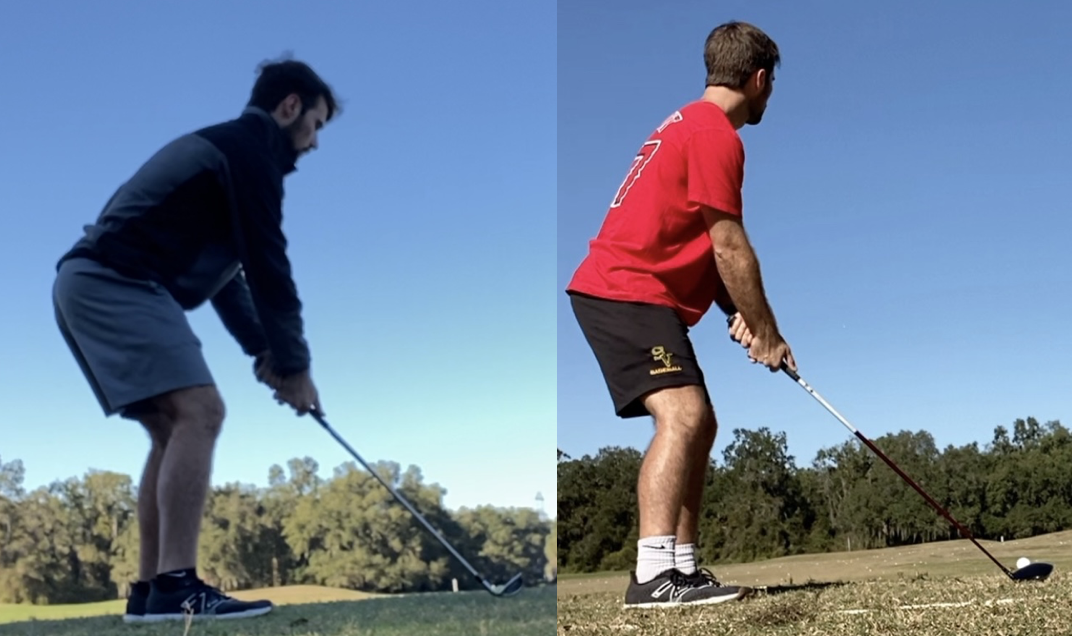
On a quiet Saturday afternoon, James Dyson had finally had enough. At the time, he was in his mid 20’s. He was vacuuming his home – a small farmhouse in the western part of England. On this day, he ran into a familiar problem: His vacuum quickly lost suction. This was pretty common for most people, but Dyson – an engineer by nature – wasn’t satisfied. He was using a top of the line Hoover vacuum with one of the most powerful motors in the world. It didn’t make sense why it constantly lost suction, so he decided to do some investigation.
Dyson opened the vacuum up and saw its basic interior design: A motor, a bag (which also acted as a filter), and a tube. Dust and air got sucked into the bag. The air got let out through small holes in the lining of the bag, which eventually got filtered into the motor. The dust remained in the bag. Seeing this, Dyson theorized his problem was due to lack of air filtration. He attempted to solve it by emptying the vacuum bag, thinking it was filled with too much dust for air to get filtered through. This, to his dismay, did not work.
Dyson came up with a new theory. The problem wasn’t the amount of dust in the bag. It was the thin lining of dust along the inside part of the bag. Air couldn’t get filtered through. It was clogged. It also didn’t take a ton to clog it, creating a frustrating experience for Dyson – along with many others at the time. He came up with a new idea: What if you could create a vacuum that didn’t need a bag at all?
He found his answer in place that didn’t have anything to do with vacuums.
Three years later, Dyson took a trip to a local timber merchant. He noticed something interesting: The machines designed to cut the wood utilized a cone-shaped device, better known as a cyclone. The design of the cyclone changed air flow dynamics. Dust and air were separated through centrifugal force (forces acting outward on a body moving around a center point). This allowed for the collection of dust without any residue exiting the chimney.
This intrigued Dyson. The machines collected saw dust all day long without making a mess of it. As soon as he saw it, he knew he had something. Dyson rushed home and assembled a miniature cyclone made out of cardboard and gaffer tape. He connected it to the vacuum hose so dust and air could accumulate. Heart racing, he tried out his prototype cyclone vacuum. It worked.
The next day at work, he brought the idea to his boss. Five years and 5,000 prototypes later, Dyson brought it to market. It was the world’s first ever dual-cyclone vacuum cleaner.
It made him over $3 billion.
…
There are many lessons to learn from Dyson’s accidental – but brilliant – discovery. Of these, there is one that stands out among the rest. We’ve all felt “stuck” at some point when trying to solve a difficult problem. It’s natural. The problem, however, is how we choose to view it. What seems like a lack of information is often a lack of creativity. We’ve exhausted the same lens for so long we don’t have anywhere else to draw insights from. This is the brilliance in Dyson’s dual cyclone vacuum. He didn’t find his vacuum cleaner solution looking at vacuums. He found it in a saw mill. Saw mills don’t have anything to do with vacuum cleaners.
That is, until Dyson learned how to connect the dots.
Our process to solve complex problems is often backwards. We get so consumed looking at the problem we become blind to solutions that exist outside of the problem. Our lens is too narrow. Our creativity, as a result, suffers. We take the square peg and continue to jam it into the round hole. We think we’re working hard on the surface, but working hard isn’t good enough to solve complex problems. We have to work smart. Exhausting the same angles over and over again is not smart.
It’s much smarter, instead, to take a completely different angle. You won’t find what no one else has found if you look where everyone else has already looked. You need to be different and think outside the box. One of the best ways to do this is to broaden your horizon and dive into a completely unrelated sector. You’d be surprised – it’s much more related than you think. You just have to do some digging.
Following in Dyson’s footsteps, I’ve decided to dive into a different sector. I’ve taken up golf (for the time being, at least).

I’ve played and coached a ton of baseball to this point in my life, but not a ton of golf. It’s foreign in a lot of different ways. This has been important. I am a novice at something for the first time in a while. It’s a weird feeling, but I’ve learned a ton so far because of it. Below is what I’ve accumulated and how I’ve been able to draw some interesting parallels to baseball.
Golf and baseball might seem very similar on the surface, but they’re much more different than I originally thought. It’s exactly what I was hoping for.
- Balance
If I want to get a good swing off, being balanced is the floor. It starts in my set up. I have to start in a slight hinge with both feet planted firmly in the ground. The entirety of my foot needs to be connected to the ground. When I start my backswing, I know immediately whether I had a good set up or not. If I feel any kind of weight shift towards my toes, I tend to slice balls and come out of balance. My quick fix for this has been setting up closer to the ball. The further the ball gets away from me, the more I feel like I have to compensate by going to my toes and losing the club face away from me.

My best swings are easy, controlled, and I can feel weight in both of my feet throughout the duration of my back swing. Getting my base underneath me has been the lowest hanging fruit. This starts with simply being balanced. Baseball is no different. There’s not a lot we do well athletically when we’re out of balance. Finding this natural cadence is critical for performance.
- Be smooth
My best swings don’t feel like two separate pieces where the transfer of energy is choppy. They’re smooth. I don’t carry any additional tension in my set up. My mind isn’t racing trying to focus on three different things at once. They’re simple, tension free, and the club just moves with ease. Smooth swings are powerful swings. You’ll create tension when you need it if you just focus on doing a lot with a little less. Baseball works the same way. Our sequence falls apart when we become too tense, rigid, or try to do more than we need to. The more we focus on being smooth, the more things tend to clean up.
Below are two swings that illustrate this contrast pretty well.
- Head still
When we rotate in baseball and in golf, we want to keep our head still as the body rotates underneath it. The eyes should be stable. You should have a clear visual of the ball on the tee. This has been a great reminder when my contact quality is insufficient. There have been a lot of times where I thought my slices or top spin was because my club head wasn’t getting square. As it turns out, the club head was at the mercy of what it could see. My eyes were moving too much for my club head to make consistent contact with any kind of precision. When the head is steady, the body will follow. You can’t blame the club – or bat – for a problem that it didn’t create.
- Club path
Out of all the things I’ve focused on when it comes to the golf swing, my biggest unlock has been focusing on path. More specifically, my path during the backswing. If my club doesn’t move away in a straight line from the ball, my club face comes across the ball into impact. This creates a ton of slice. As a result, I’ve learned how to stay through the ball better by keeping the path of the club inside the ball. If I don’t get this domino right, the rest of my swing suffers. How the club head makes moves to the ball is everything. If you can’t get your club path right, it’s tough to have success with anything else.
Hitting, as I’ve found, is very similar. Los Angeles Dodgers hitting coach Rob Van Scoyoc talked about this at Bridge the Gap 2021. He’s seen tons of C+ lower half and A barrel paths at the big league level, but not a lot of A lower half and C barrel paths. Having an efficient bat path isn’t just a luxury. It’s a necessity. Your contact quality is at the mercy of how your barrel makes moves to the ball. If you have an inefficiency here, it’s tough to make up for it somewhere else in the sequence.
- Death by cueing
There’s something about a golf lesson that turns everyone into a coach. It’s one of those things where enough people have dabbled into it to have an opinion. Sometimes, it’s enough to be dangerous. It’s even more dangerous when you’re someone who likes to overanalyze, overthink, and get inside your own head easily (i.e. me).
There have been plenty of times where I’ve noticed myself getting too focused on the swing. I’m trying to focus on the back swing, my contact position, balance, and finish all at the same time. It never usually works out. Other times I try to focus on one swing, but then it doesn’t work so I’m on to the next thing. This also doesn’t work really well. I’m too busy bouncing between things to actually focus on and get good at one thing.
The best solution – as I’ve also learned with throwing and hitting – is to keep things simple. Relax. Focus on one thing at a time. Just because you’re focusing on one thing doesn’t mean you’re only impacting your swing in one area. The thought of being smooth can impact your backswing, path, and lower half all at once. It doesn’t mean you have to think about all those things. You just have to find that one thing that helps everything sync up.
There’s a time and place for internal thoughts, cueing, and focusing on specific parts of the swing. For example, I’ve had a ton of success thinking about my lead arm. Keeping it straighter, as opposed to bent, has had a big impact on my ball flight. What I’ve realized, however, is focusing on the lead arm is not a permanent focus of attention. It’s a temporary solution. I just have to check the box. Once I check it, I have to take my focus back to being loose and smooth.
You’re not always going to have the same feel with your lead arm whenever you shoot. Chasing something that’s tough to replicate can create some frustrating moments. Instead, know your common mechanical tendencies and have specific strategies to check those boxes. Once you check the box, we need to take our attention to what’s most important: Making consistent and quality contact with the golf ball. Everything we do must help us accomplish that. Anything else is counter productive.
Hitting a golf ball off a tee is simple, but it’s really easy to make it complex. Don’t let it.
- Getting it to Transfer
From a skill acquisition standpoint, learning how to play golf has been a tremendous experience. One of the things I studied extensively for my college capstone paper was blocked practice vs. variable practice. Based on what I researched, I concluded variable practice was better for long term learning retention. I still stand by this, but being a novice at golf has reminded me of the importance of blocked practice early on. When you learn a new skill, it’s critical you find small moments of success early on. If you want people to continue to work at something, they need to see a relationship between inputs and outputs. They need to see something work to gain confidence. Confidence builds motivation. Motivation fuels habits that help develop long term skill retention.
Training in blocked environments is the easiest way to build confidence for a new skill. There aren’t any variables changing. The only thing you’re doing is trying to find something that works and learn how to repeat it. We can’t just do something once and expect to retain it. We have to do it over and over for our brain and body to learn how to recreate it. You’re building a roadmap from scratch for a specific motor output. The first draft usually isn’t the best one.
While blocked environments are great for learning a new skill, they’re not the best for retention. This is where variable practice comes into play. The interesting part about golf is it has variable practice built into the game. Each club represents a slightly different movement problem. While golfers don’t perform in an open environment (hitting), they have to maneuver different variables in terms of the hardware they are presented with. Your software solutions, as a result, are going to all be slightly different. This was a problem I ran into. The time I spent working on my irons didn’t transfer over to the driver. Some things helped, but it didn’t completely help. The driver is a much different club. The only way to get better at it is to spend time practicing with it.
The best way to explain this is to show it. Below are two swings. One is with a driver, the other is with an iron. They’re both good swings, but they’re two slightly different swings. This contrast was tough to adjust to early on.
Learning how to blend swing between clubs was a great reminder of the importance of transfer. When we train hitters and pitchers, we have to focus on the activities and environments that create the most amount of transfer. Throwing on a flat ground doesn’t help you throw on a mound. Hitting flips doesn’t help you hit 95. If you want to create a specific level of transfer, your training has to mirror that specificity.
Train accordingly.
